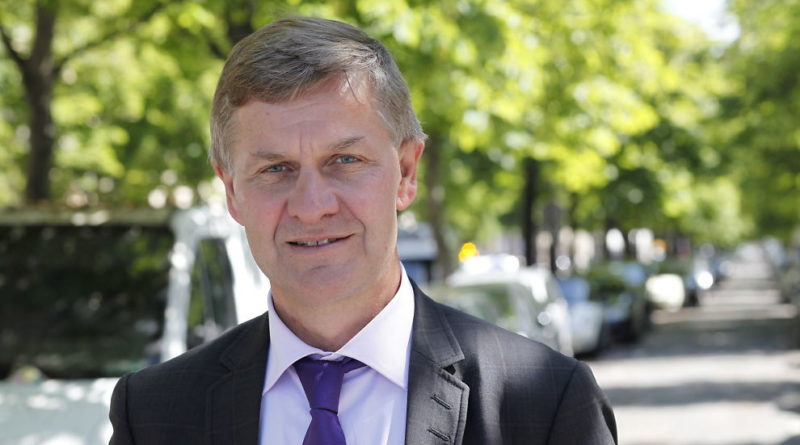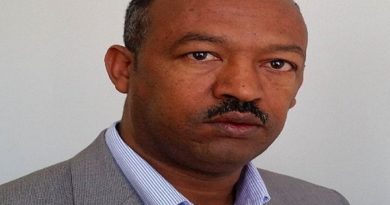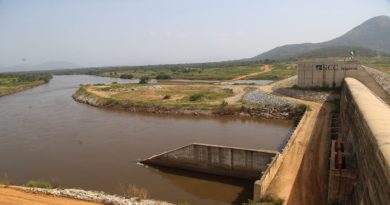Erik Solheim: Bringing the world’s dead zones back to life
By Erik Solheim, head of UN Environment
For lovers of seafood it’s a bonanza. Thousands of blue crabs stacked on top of each other in the shallow waters of the Chesapeake Bay, easy prey for those on the hunt for dinner. The phenomenon fills stomachs with such joy that locals call it the “crab jubilee”. But the joy masks a grim reality.
For decades, America’s largest estuary, which is fed by more than 150 rivers and streams from four states, has been treated like one great big sewer. Pesticides, pharmaceuticals, human waste and heavy metals from homes, farms and factories have washed into the rivers that feed the bay, polluting a national treasure with a deadly cocktail of toxins and excess nutrients.
On average, about 350 million pounds of nitrogen and phosphorous, most of which come from farms, wash into the bay every year. The extra nutrients in the water cause massive algal blooms, blocking the sun from reaching the bottom of the bay. When the algae dies and rots, it sucks oxygen from the water, suffocating life – fish, seagrass, crabs are all starved of oxygen. The crab “jubilee” is a misnomer. In fact, it is an exodus of creatures desperately trying to escape the bay’s “dead zone”.
Hundreds of these dead zones exist around the world, transforming large parts of our oceans, seas and waterways into underwater deserts devoid of life. The second largest of these deserts is found in the Gulf of Mexico, whose oxygen-starved waters threaten to devastate a region that supplies America with 40 per cent of its seafood.
The dead zones spreading along our coasts are a product of how we have come to view our environment. For too long, we have used our water, land and air as dumping grounds for the waste we generate. Today we are dealing with the consequences.
Hundreds of these dead zones exist around the world, transforming large parts of our oceans, seas and waterways into underwater deserts devoid of life.
Oil, heavy metals, plastic and pesticides pollute the world’s oceans and soil, making it harder and more expensive to feed ourselves. The burning of fossil fuels has turned the air we breathe into a filthy mix of harmful gases and tiny particles that lodge deep inside our lungs, leading to the premature death of about 200,000 Americans every year and damaging the health of many more. We are all affected by this: whether by the polluted air we breathe, the contaminated water we drink or the chemical-laced food we eat.
Many believe that fighting pollution means that we will have to curb economic growth. In fact, the opposite is true. Failing to tackle pollution harms economic growth by damaging key industries, destroying people’s livelihoods, intensifying climate change and costing billions of dollars to remedy. Indeed, the falling cost of energy from renewable sources like the wind and sun already proves that it is possible to beat back the pollution in our air without slowing economic growth. Countries that lead the shift away from fossil fuels to more sustainable, resource-efficient economies that produce less waste will reap the economic and environmental benefits of today’s energy revolution.
Those that choose not to follow this path will be left behind to foot a clean-up bill that will rise in step with the pollution they generate. When we destroy the ecosystems that sustain us, when we pollute the water, air and land with heavy metals, toxic chemicals and harmful particles, we cripple our health and our economies, and we pollute the lives of our children.
All of us have a responsibility to advocate for bold, pollution-beating commitments from our politicians and business leaders.
In December, UN Environment hosted the third United Nations Environment Assembly in Nairobi. Curbing pollution – in all its insidious, life-threatening forms – was at the top of our agenda. And I’m incredibly proud to say that we delivered almost 2.5 million pledges from governments, civil society, businesses, and individuals to clean up the planet.
But our work is far from over. Every single one of us has a role to play in this fight. Whether it’s buying an electric car, recycling our waste, reducing the enormous amount of food we throw away or refusing to use plastic bags when we shop, all of us can reduce the amount of waste and pollution that ends up in our air, soil and water. All of us have a responsibility to advocate for bold, pollution-beating commitments from our politicians and business leaders. My report, “Towards a Pollution-Free Planet”, sets out how we can drive this transformation. It will require identifying the hardest-hitting pollutants, beefing up environmental laws and pouring money into research, monitoring and cleaner, greener infrastructure.
We already know what happens when individuals, companies, scientists and governments unite to fight pollution and environmental devastation. After decades of slow but steady progress, the Chesapeake Bay is finally showing signs of recovery. The dead zone is slowly shrinking. Fish, blue crab and oyster populations are starting to recover as nitrogen, phosphorous and other forms of pollution are slowly reduced. The health of the bay is still poor but it is getting better thanks to the work of a dedicated task force made up of representatives of local governments, federal agencies, academic institutions, NGOs and businesses. If we can replicate this approach on a global scale, then the world stands a chance of tackling one of the biggest scourges of our time.




